The Fundamentals in Spinning and Weaving Technologies
It was before 5,000 BC when humans started spinning threads and making fabrics. These are some of the oldest forms of technology invented by man, and spinning and weaving remain unchanged from many years ago. Advancements in technology have seen us devise ways in which we can hasten the process, save labor, and diversify as much as possible.Rudimental spinning and weaving tools, as well as early mechanized spinning machines, are exhibited in the first section, at the Textile Machinery Pavilion. Even the current state-of-the-art technologies were born of these fundamental techniques.
The Spinning Technology
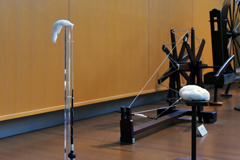
Spinning is composed of three fundamental processes:i) ulling a fiber out of a mass of fibers,ii)twisting thread to strengthen it into yarn, and iii) winding up the spun yarn. Some of the oldest spinning tools, such as a spindle and a spinning wheel, are displayed.
The Weaving Technology
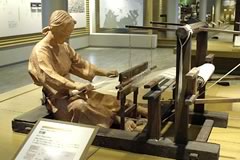
The fundamental work in weaving is also composed of three parts: i) dividing and opening lengthwise warps (opening), ii) inserting wefts widthways between warps (widthway insertion), and iii) And beating the inserted wefts with a reed (beating), which completes the three-part process.Early tools, such as the backstrap loom, which involves the physical actions of the hands and waist and a ground loom, used in the Echigo Province (present Niigata Prefecture) during the Edo period (1603-1868) are exhibited.
Various Types of Fibers
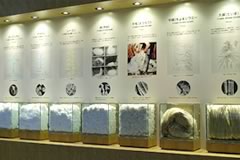
Fibers are roughly divided into natural fibers and chemical fibers and are further divided into smaller categories, based on materials and ingredients used. Twelve major types of fibers, such as silk, wool, nylon, and polyester are on display.
Textiles of the World and Japan
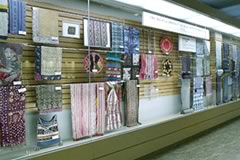
Silk is said to originate in China, wool in Mesopotamia, flax in Egypt, and cotton in India; fibers that suit the climate of regions had established themselves and were used for textiles. Fifty-seven different traditional cotton textiles of the world and Japan are presented.
A Story of Cotton Flowers

Cotton is a perennial plant in the family of Malvaceae, native to India, and said to have come to Japan about 1,200 years ago. A panel displays the world’s cotton-flower-producing regions and their production volumes.
From Tools to Machines
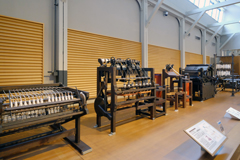
Replicas of Spinning Jenny, Water-frame, and Spinning Mule, which were invented during the age of the Industrial Revolution in the mid-18th century England, are displayed. These are spinning machines you can only see in this museum and are of the time when technology had taken the first step, from hand spinning and hand weaving, towards mechanization.
The Spinning Demonstration
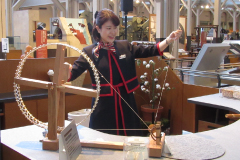
The work of spinning yarn from cotton, using old tools, is demonstrated. The shrubs of cotton, which are the materials for yarn, are also a must-see in the exhibit. In order to make cotton yarn, the following steps are done: i) Remove seeds from dried cotton balls, using a cotton gin (Ginning); ii) Separate fibers by vibrating the strings of a cotton bow, making it easy to spin (Cotton beating); and iii) Pull fibers from cotton, using a spinning wheel, twist it into yarn, and wind it up (Twisting and winding up).

(Filmed on August, 2019)

